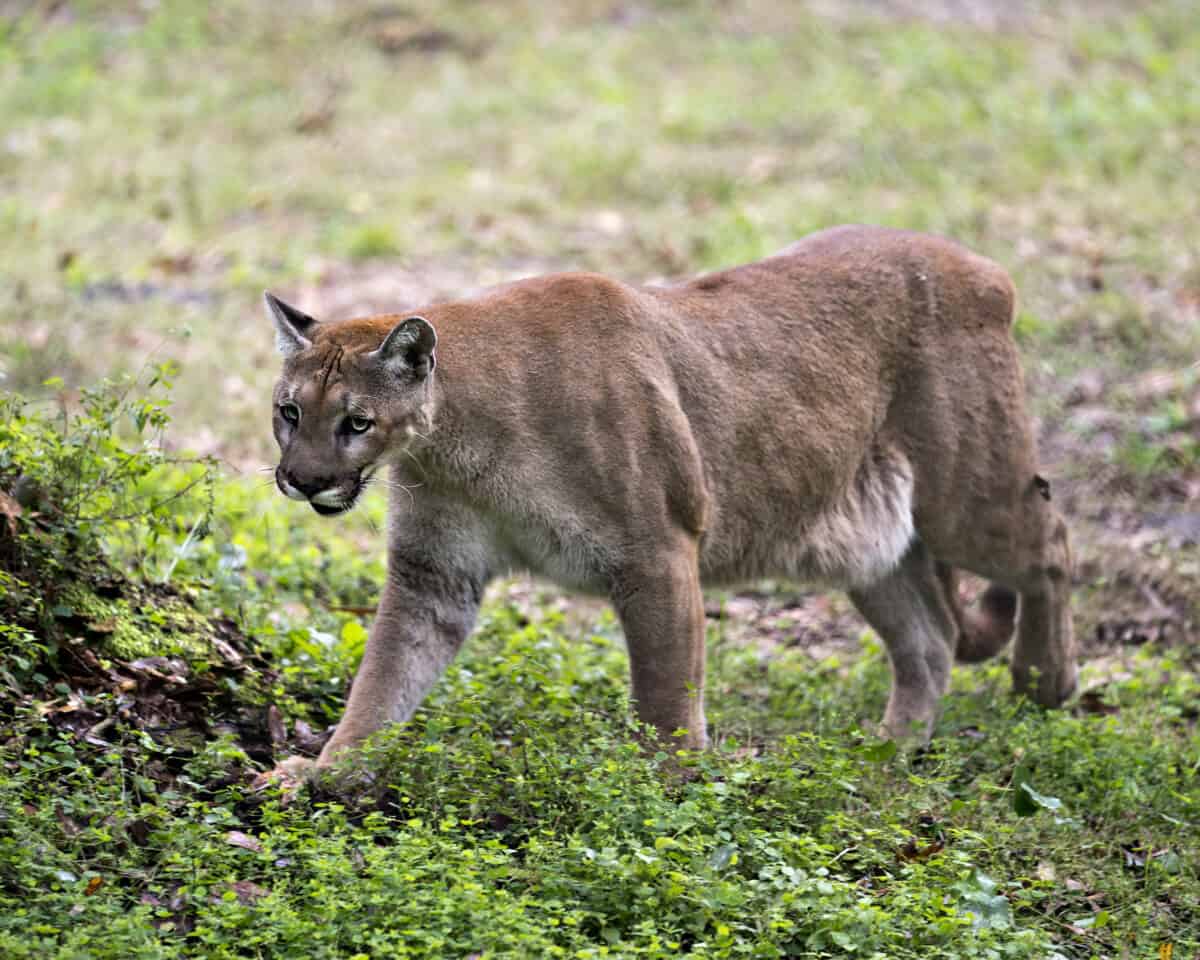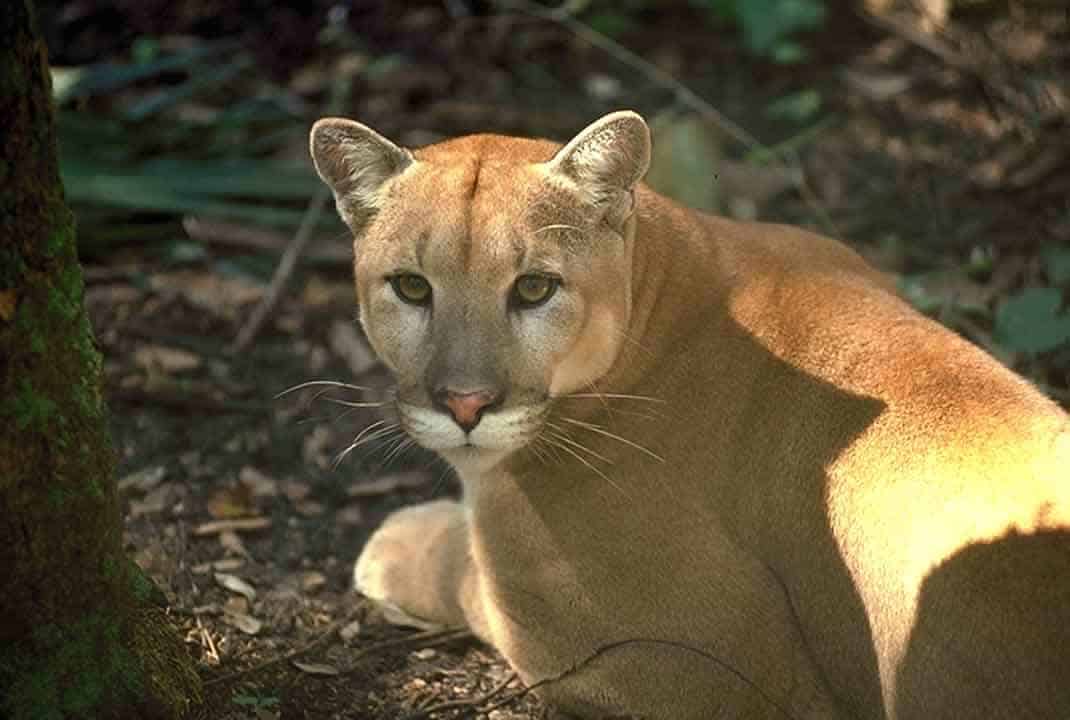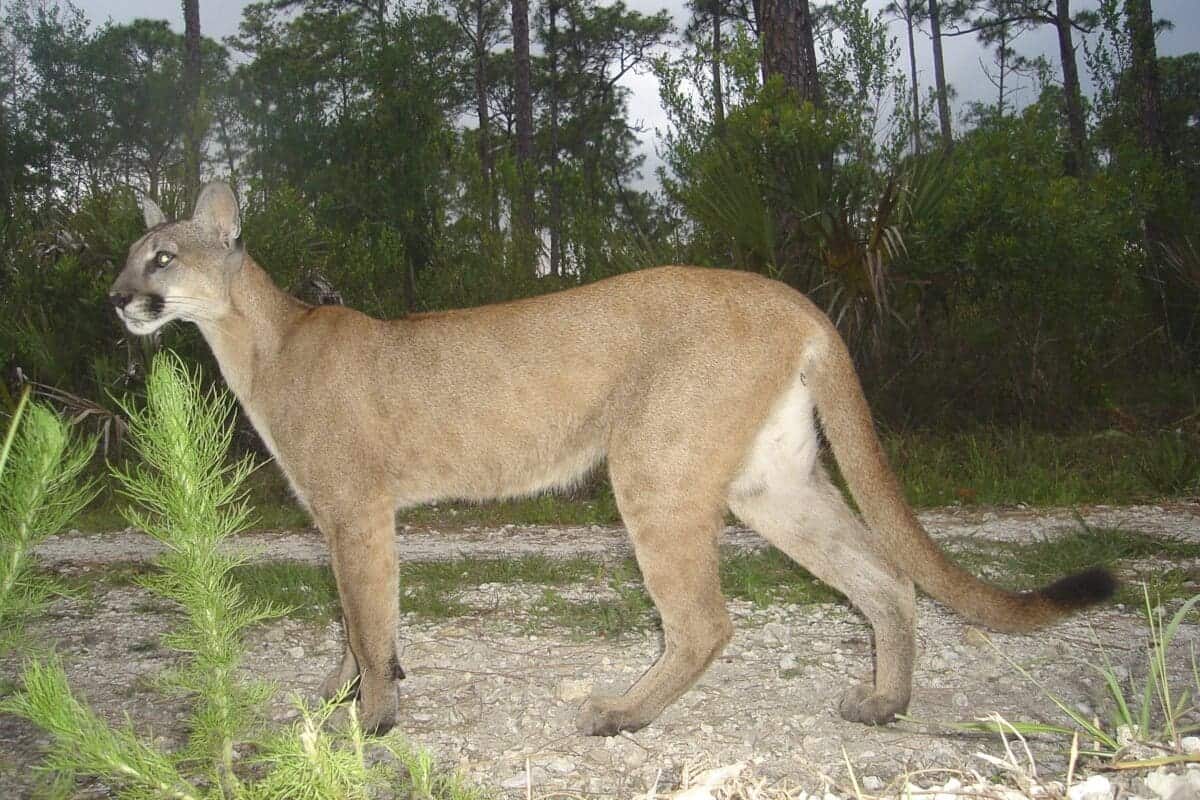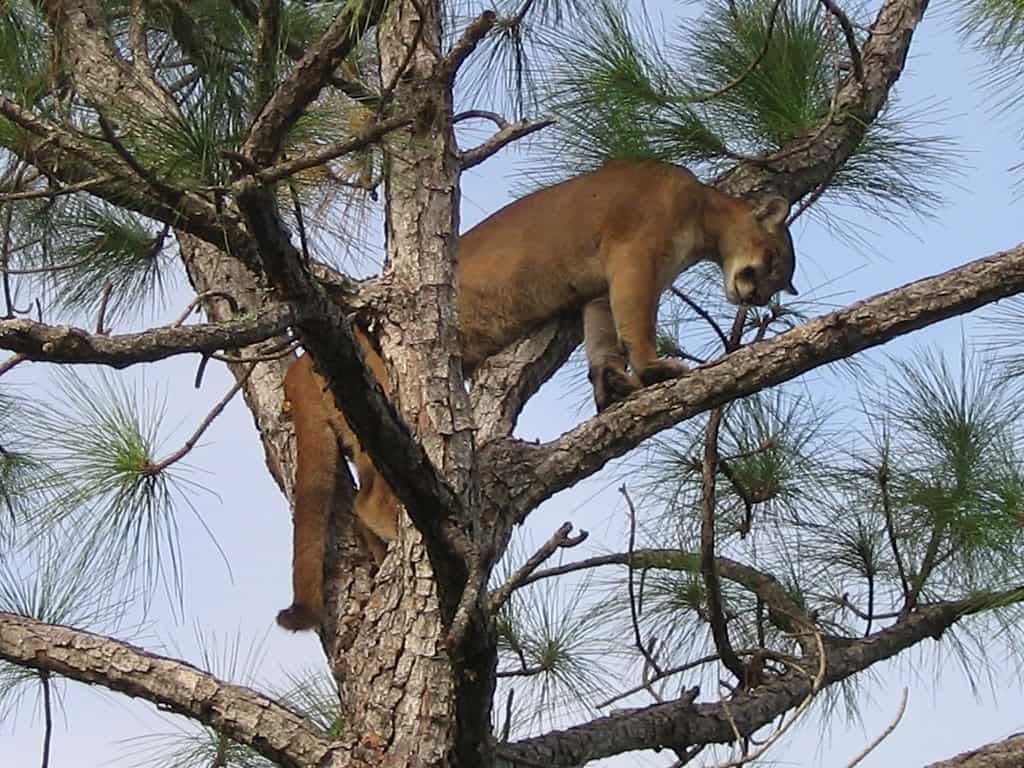The Florida panther, a majestic and critically endangered subspecies of mountain lion, has long been an elusive symbol of Florida’s wild heritage. In recent years, residents and wildlife officials have reported an intriguing uptick in panther sightings across the state. This phenomenon, while exciting for wildlife enthusiasts, carries complex implications for conservation efforts, human-wildlife interactions, and the future of these magnificent cats.
The increasing frequency of panther encounters tells a multifaceted story of conservation success, habitat challenges, and a delicate ecosystem in flux. As we explore why more Floridians are spotting these rare predators, we’ll uncover the scientific, environmental, and social factors behind this trend, while considering what it means for the future coexistence of humans and panthers in the Sunshine State.
The Historical Decline of Florida Panthers

Before understanding the recent rise in sightings, it’s essential to appreciate the historical context of Florida panther populations. Once abundant throughout the southeastern United States, Florida panthers experienced a catastrophic decline during the 19th and 20th centuries. By the 1970s, hunting, habitat destruction, and human development had reduced their numbers to an estimated 20-30 individuals, primarily isolated in the swamps and forests of South Florida.
This population bottleneck led to serious genetic issues, including heart defects and reproductive problems. The Florida panther became the first animal to be placed on the U.S. endangered species list in 1973, with recovery prospects initially looking grim. Understanding this historical nadir provides crucial context for appreciating the significance of today’s increased sightings, representing a remarkable, though still precarious, conservation comeback story.
Conservation Success Stories

The increasing panther sightings reflect decades of dedicated conservation efforts. In a landmark initiative during the 1990s, eight female Texas pumas were introduced to the Florida panther population to address genetic inbreeding problems. This genetic restoration project proved successful, increasing genetic diversity and reducing the prevalence of health defects. Simultaneously, federal and state agencies implemented rigorous protection measures, habitat conservation initiatives, and wildlife corridors.
The Florida Panther Recovery Plan brought stakeholders together to coordinate conservation actions. These efforts have paid dividends – the population has grown from fewer than 30 panthers to an estimated 120-230 adults today. While still endangered, this growth represents one of the most significant factors behind increased sightings. Each panther glimpsed by a Florida resident represents a living testament to conservation perseverance and the species’ remarkable resilience.
Expanding Territorial Range

As the Florida panther population recovers, one natural consequence is territorial expansion. Adult male panthers require extensive territories, typically spanning 150-200 square miles, while females maintain smaller ranges of 50-100 square miles. With the growing population in their core South Florida habitat, younger males especially are being forced to disperse northward in search of unoccupied territory. This natural dispersal behavior has led panthers to recolonize areas they haven’t inhabited for decades.
Panthers have been confirmed north of the Caloosahatchee River, which historically served as a natural boundary, with verified sightings in central Florida counties like Polk, Osceola, and even as far north as the Kissimmee Prairie. This expanding range naturally increases the likelihood of human-panther encounters. Wildlife cameras, both from research institutions and private landowners, have documented panthers in areas where they were long absent, contributing significantly to the rising number of confirmed sightings.
Improved Monitoring Technology

Technological advances have revolutionized how we detect and document Florida panthers. Wildlife agencies now employ sophisticated monitoring tools including GPS collars, trail cameras, and environmental DNA sampling to track panther movements with unprecedented precision. The Florida Fish and Wildlife Conservation Commission (FWC) maintains an extensive network of wildlife cameras throughout potential panther habitat, capturing thousands of images annually.
Simultaneously, the proliferation of affordable, high-quality trail cameras among private landowners, hunters, and wildlife enthusiasts has created an informal civilian monitoring network. The ubiquity of smartphones enables immediate documentation and reporting of chance encounters. The FWC’s panther sighting database, which includes a public reporting system and verification protocol, has also streamlined the process of recording credible sightings. This technological revolution means panthers that might have passed unnoticed a decade ago are now being documented, contributing significantly to the perception of increased encounters.
Human Development Patterns

Florida’s explosive population growth continues to reshape the landscape, creating new dynamics between humans and panthers. The state gained nearly 3 million residents between 2010 and 2020, with much of this growth occurring in previously rural areas adjacent to panther habitat. As developments expand into what was once natural land, the mathematical probability of human-panther encounters naturally increases. Housing developments, particularly those featuring large lots or that border preserved lands, create a complex edge habitat where human and wildlife worlds intersect.
These neighborhood borders often attract deer and other panther prey animals, subsequently drawing the predators themselves. Additionally, the pandemic-driven shift toward remote work has enabled more people to live in rural and semi-rural areas of Florida, increasing human presence in regions where panthers roam. This fundamental shift in human settlement patterns means more eyes are present in panther territory, inevitably leading to more reported sightings.
Changes in Prey Distribution

Florida panthers are opportunistic hunters that follow their prey, with white-tailed deer constituting approximately 60-90% of their diet, supplemented by wild hogs, raccoons, and armadillos. Recent changes in prey distribution have influenced panther movements and potentially contributed to increased sightings. Florida’s deer population has been thriving in many areas, with some regions experiencing localized population booms that naturally attract predators. Agricultural expansion in certain corridors has inadvertently created attractive habitat for deer and feral hogs.
Meanwhile, periods of drought and changing hydrological patterns in the Everglades ecosystem have sometimes pushed prey species toward the periphery of traditional panther habitat, with panthers following close behind. Wildlife biologists have documented panthers traveling substantial distances to follow seasonal prey movements. These shifting prey dynamics sometimes lead panthers into areas closer to human development, where they might be spotted by residents. The relationship between prey availability and panther movement patterns remains a crucial factor in understanding the geographic distribution of panther sightings.
Climate and Environmental Factors

Environmental conditions significantly influence panther behavior and movement patterns. Florida’s changing climate, with increasingly severe weather events, affects panthers in ways that may increase visibility. Hurricane impacts on forest canopy and vegetation can temporarily displace panthers from preferred dense cover. Rising sea levels and saltwater intrusion in coastal areas of South Florida are gradually reshaping portions of the panthers’ core habitat, potentially pushing some individuals inland toward more populated areas.
Seasonal flooding patterns, which have become more extreme and less predictable, similarly affect movement. During extended drought periods, panthers often travel more widely in search of water sources, sometimes bringing them closer to human-maintained water features. South Florida’s distinct dry season (November to April) tends to concentrate wildlife around remaining water sources, creating natural hotspots for panther activity that may be more visible to humans. These environmental pressures subtly reshape panther habitat utilization patterns in ways that can increase the frequency of sightings.
Increased Public Awareness

A significant factor in the perceived increase in panther sightings is heightened public awareness and interest. Conservation organizations, government agencies, and educational institutions have conducted extensive outreach about Florida’s endangered panthers, teaching residents how to identify them and report sightings. School programs throughout Florida regularly educate children about panther conservation, creating generations of informed citizens attuned to the possibility of spotting these rare cats.
Media coverage of panthers has expanded dramatically, with local news outlets promptly reporting confirmed sightings and sharing trail camera images that often go viral on social media. The Florida Panther National Wildlife Refuge and various state parks have developed educational programs specifically focused on panther awareness. This increased collective knowledge means more Floridians can accurately identify panthers rather than misidentifying them as other large cats or dogs. The psychological phenomenon of selective attention also plays a role—once people learn about panthers, they become more likely to notice signs of their presence.
Wildlife Corridors and Habitat Connectivity

Strategic efforts to maintain and restore habitat connectivity have created new movement opportunities for panthers. Florida’s innovative wildlife corridor initiatives, including the ambitious Florida Wildlife Corridor Act of 2021, protect and connect natural areas that facilitate panther movement. These corridors allow panthers to safely travel between habitat patches, enabling them to access new territories. Engineers have designed wildlife underpasses along major roadways like Interstate 75 (Alligator Alley), complete with fencing that guides animals toward these safe crossing points.
Camera monitoring has confirmed regular panther use of these structures. Conservation easements on private ranches and agricultural lands have preserved critical linkages between public conservation lands. Together, these connectivity efforts have created protected pathways for panthers to expand northward. As panthers utilize these corridors to disperse from their core South Florida population center, they naturally appear in areas where sightings were previously rare. The success of these connectivity efforts directly correlates with the geographic expansion of confirmed panther sightings throughout central Florida.
Behavioral Adaptations

Evidence suggests Florida panthers may be undergoing subtle behavioral adaptations that increase their visibility. Research indicates some panthers are showing increasing tolerance for human-modified landscapes, particularly agricultural areas and low-density rural residential environments that maintain adequate cover. GPS collar data reveals that while panthers generally avoid direct human contact, some individuals, particularly younger dispersing males, have demonstrated remarkable adaptability in navigating fragmented habitats. Some panthers have learned to utilize drainage ditches, canal edges, and power line rights-of-way as movement corridors through otherwise developed areas.
Temporal adaptation is also evident, with panthers in areas with human presence showing stronger nocturnal tendencies, though dawn and dusk movements occasionally bring them into view of early risers or evening commuters. Wildlife biologists have documented cases of panthers denning successfully in surprisingly close proximity to human infrastructure when adequate vegetative screening exists. These evolving behavioral traits enable panthers to utilize more of Florida’s complex landscape mosaic, naturally increasing the potential for sightings.
The Role of Social Media and Citizen Science

The digital revolution has transformed how panther sightings are shared and verified. Social media platforms enable instantaneous distribution of panther photos and videos, creating viral moments from what were once isolated local experiences. Facebook groups dedicated to Florida wildlife regularly feature panther discussions, with members sharing and scrutinizing potential sightings. The Florida Fish and Wildlife Conservation Commission operates an online panther sighting database that enables citizens to report encounters, upload evidence, and contribute to scientific understanding of panther distribution.
Mobile applications like iNaturalist allow for geotagged wildlife reporting that contributes to larger scientific datasets. When a credible panther sighting occurs in a new area, it often generates substantial social media attention, prompting heightened awareness and vigilance among nearby residents who may subsequently notice panthers they might have overlooked previously. This democratization of wildlife monitoring creates a powerful feedback loop—more sightings lead to more awareness, which in turn leads to more reported sightings, amplifying the public perception of increasing panther presence.
Challenges of Human-Panther Coexistence

The increasing intersection of human and panther territories presents complex challenges. While panthers typically avoid human contact, their territorial requirements inevitably create overlap with human-dominated landscapes. Livestock predation has become a management challenge in some rural areas, particularly affecting small-scale farms and ranches that may lack predator-proof enclosures. The Florida Fish and Wildlife Conservation Commission has developed compensation programs for verified livestock losses and provides technical assistance for predator-proof enclosures. Pet safety has emerged as a concern in some communities near panther habitat, with recommendations for keeping pets indoors during dawn and dusk hours.
Transportation infrastructure continues to pose significant risks to dispersing panthers, with vehicle collisions remaining a leading cause of mortality despite wildlife crossing structures. Public safety education has become increasingly important, with wildlife officials emphasizing that while panthers almost never attack humans, appropriate precautions should still be observed. Successful coexistence requires adaptive management approaches that balance human needs with panther conservation, particularly as the frequency of encounters increases.
The Future of Florida Panther Recovery

The increasing frequency of panther sightings represents both promise and challenges for the species’ long-term recovery. Wildlife biologists recognize that the current South Florida population is approaching the carrying capacity of available protected habitat, making northward expansion essential for continued recovery. Models suggest that establishing additional breeding populations in central and northern Florida will be crucial for achieving full recovery and eventual delisting. However, habitat fragmentation, road mortality, and potential human conflicts remain significant obstacles.
Genetic management continues to be important, with ongoing monitoring to ensure adequate diversity as the population grows. Climate change projections, particularly regarding sea level rise in South Florida, add another layer of complexity to long-term planning. The U.S. Fish and Wildlife Service’s recovery criteria call for three separate populations of at least 240 panthers each, sustained over 12 years. While increased sightings reflect remarkable progress from the brink of extinction, they also highlight the complex path ahead as panthers reclaim portions of their historical range within a landscape now dominated by human infrastructure and activity.
Conclusion: A Delicate Balance of Success and Challenge

The rising frequency of Florida panther sightings tells a nuanced story of conservation achievement mixed with emerging challenges. Each glimpse of these elusive predators represents a remarkable recovery from the precipice of extinction just decades ago, showcasing the effectiveness of dedicated conservation efforts, habitat protection, and scientific management. Yet this success brings new complexities as panthers navigate an increasingly human-dominated landscape.
The future of Florida panther recovery hinges on our collective ability to maintain this delicate balance—celebrating and supporting their return while developing innovative approaches to human-wildlife coexistence. As panthers continue reclaiming portions of their historical range, their increased visibility serves as a powerful reminder of nature’s resilience and our responsibility as stewards of Florida’s unique natural heritage. The Florida panther’s journey from the edge of extinction to increasingly frequent sightings across the state stands as one of America’s most compelling, yet incomplete, wildlife recovery stories.
- The Largest Wolf Ever Recorded Was the Size of a Pony - August 22, 2025
- This Bird Has the Largest Wingspan of Any Living Creature - August 22, 2025
- The Brightest Supernova Ever Recorded Is Visible Again - August 22, 2025

